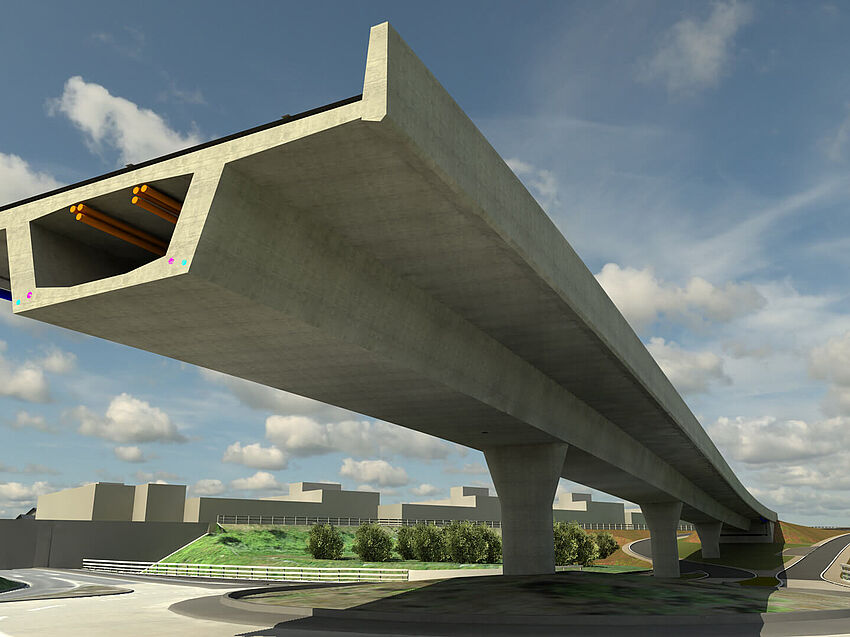A Building Information Modeling (BIM) tool with parametric modeling functionality provides bridge engineers with everything they need for a complete end-to-end workflow – from the initial bid to the final as-built construction and even maintenance. The power of parametric modeling enables a model to be quickly created and modified by adjusting parameters, so the design can be easily and dynamically modified throughout the design and construction stages. With an iterative process such as bridge design and construction, this provides significant benefits in terms of time and cost savings. However, the advantages of parametric modeling apply to the entire bridge workflow, providing a complete end-to-end solution. Even more, this technology enables easy data reusage, which can significantly lower the costs of bridge design.
Bidding and Tenders
To prepare accurate and feasible bids for bridge projects requires a lot of information upfront, such as different design options, cost estimates, and the preliminary construction schedule. However, there is a balance to be had between creating enough information to win the work and not investing too much time in case the project is awarded elsewhere. Parametric modeling and BIM tools can significantly help with creating this information, by enabling several design variants to be modeled quickly, generating accurate quantities for cost estimates from the models, and using 4D construction simulation to calculate a reliable construction schedule.
Detailed Design
The design of the chosen bridge option can be greatly streamlined by using a parametric modeling solution like ALLPLAN Bridge. Modifying the bridge parameters, such as the alignment – either as part of the design process or to incorporate any changes – updates the entire model, including any loading conditions, construction sequencing, and drawing layouts. As the geometric and structural analysis models are linked, changes in one model are reflected in the other, reducing the risk of errors and discrepancies. In addition, every discipline’s sub-model can be combined into a federated model that enables automated interdisciplinary coordination checks and clash detection, for improved quality. Furthermore, any complex reinforcement required – such as for curved alignments or unusual bridge supports – can be quickly generated automatically detailed using ALLPLAN. The associated bar schedules are also easy to create with the click of a button, saving significant time and improving accuracy.
Construction
Visualizations of the bridge and the construction sequencing in 3D are extremely helpful once the project is on site and are useful for ensuring components such as reinforcement are placed correctly. Liaison with the design team with respect to any changes made to the scheduling, sequencing, or other modifications can be done through Bimplus, ALLPLAN’s data management platform. This keeps all communications in one place, while also enabling tasks and information to be tracked, assigned, and approved in a structured and transparent way.
As Built and Maintenance
Once completed, a 3D scan of the bridge can be compared to the design model to verify the accuracy of the construction. The design model can also be used as a basis for a digital twin of the structure, as it contains important asset information as well as an accurate record of decisions made during construction. If internet-enabled sensors are included within the structure, real-time data about the bridge could also ensure informed decision making about future maintenance and asset management.
BIM for Bridges
ALLPLAN Bridge is one of the most advanced bridge modeling software solutions available, providing parametric modeling tools that streamline the bridge design process from end to end. The automated design capabilities and the dynamically updated information support optimized workflows and together with ALLPLAN and Bimplus provide a range of benefits across the entire bridge design and construction process – including less rework and waste, fewer conflicts between elements, improved collaboration, and enhanced efficiency.
You want to read more about how parametric modeling provides up-to-date project information from beginning to end? Then have a look at our free whitepaper "Roadmap to a Complete Bridge Workflow".




